Arthropods
contain around 80% of all described animal species,
currently there are over 1 million described arthropod
species.
They are one of the oldest animal groups
with fossils going back 555 million years. One of the
best known of all fossils, Trilobites, are Arthropods,
they were already a very diverse group 530
million years ago.
Arthropoda - Arthropods Arthro - joint, Pod - foot
Arthropods are found everywhere on earth in every kind of
habitat, they fly, swim, crawl, burrow, and live as external
and internal parasites.
The combined mass of Arthropods
is easily greater than that of all other animals combined. The
total human mass on earth has been estimated at being similar
to the world termite total, the figures for ants are up to twenty
times greater (both are insects and so also arthropods).
The combined biomass of a crustacean, Euphausia superba,
the Antarctic krill is estimated to be in the region of 500
million tonnes making it by mass, the most abundant single species
on earth.
However you look at it, it is difficult not
to consider that the earth is the planet of the Arthropods,
they are older than nearly other animal groups, more numerous
and of much greater biomass. Wherever you go on earth, if there
is an animal living there it will most likely be an Arthropod,
if it is on land, it will probably be an insect, in the sea
a crustacean.

A fossil Trilobite, Paraceraurus,
an early Arthropod from the Ordovician period (480-440
Million years ago) Volchow River area, Russia
picture - Vassil, used under
CC3 Attribution ShareAlike Unported License
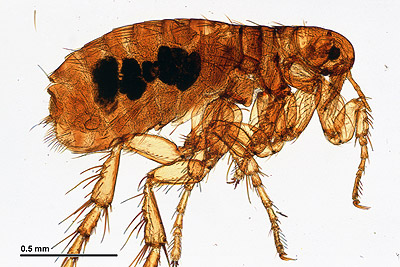
Flea - Siphonaptera, Insecta
A common ectoparasite
picture
Doc. RNDr. Josef Reischig CSc. used under CC3-Attribution
Share Alike Unported license.
Kingdom - Animalia
Phylum - Arthropoda
Basic Features:
- Exoskeleton made of chitin, which leads to a discontinuous pattern of growth, the animal grows into it, then it can't get bigger until the next stage.
- Metamorphosis common.
- Segmented bodies, segments not always evident externally though.
- Jointed appendages used for feeding and locomotion.
- Gas exchange through gills, tracheae or book lungs.
- Nitrogenous excretion through gills or Malpighian tubules.
- Bilateral symmetry, one line of symmetry down the middle - like you.
Classes:
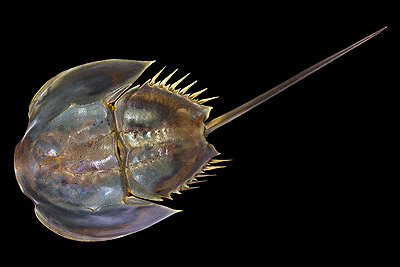
Horseshoe crab, found
in the fossil record for about 450 Million years
picture - Didier Descouens,
used under CC3 Attribution Share Alike Unported license.
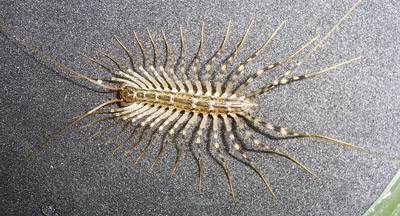
A centipede commonly
found in houses in the tropics
Centipedes are fast
moving predators of smaller invertebrates.
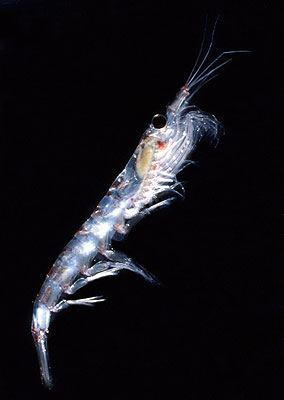
Krill - Euphausia superba
A contender for possibly the most successful
animal species on the planet, individually a maximum
of 6cm long, but with a standing biomass of as much
as 500 million tonnes
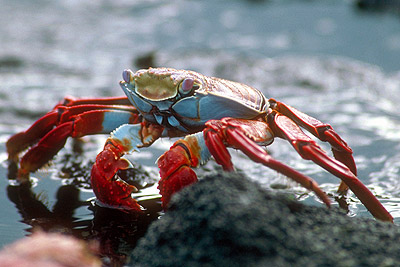
Sally lightfoot crab, Graspus
graspus
A modern Arthropod from the
Galapagos Islands
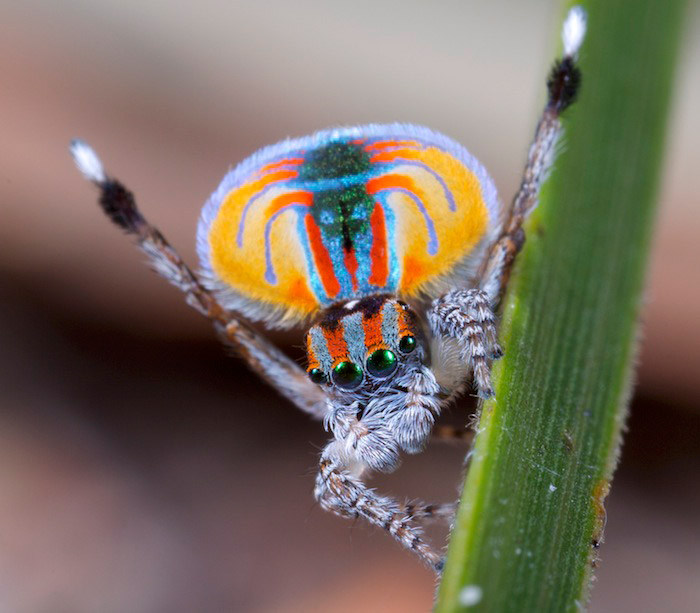
Male peacock spider
A small jumping spider about 5mm long, notable for an
elaborate and colourful mating display to the females.
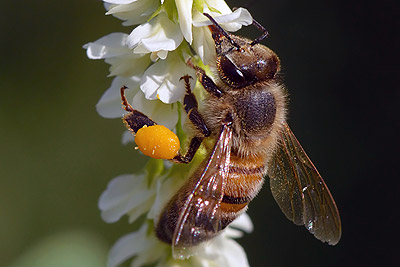
A Honey Bee, (Hymenoptera)
Apis mellifera.
Bees of all kinds
are invaluable as pollinators for wild plants and crops,
they collect pollen in a "pollen basket" on their hind
legs, the bright yellow mass you can see in this picture.
In the process of collecting pollen and nectar for their
own purposes, they conincidentally spread it from plant
to plant pollinating them.
Top banner picture - Alvesgaspar, used under GNU-1.2 license.
